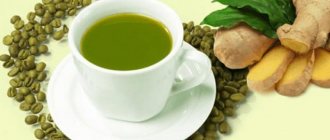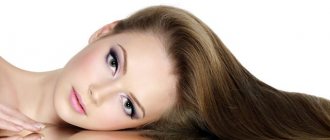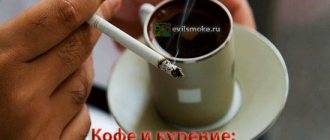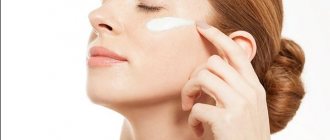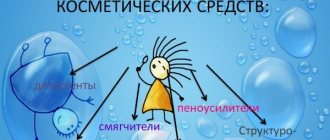Zelenka ( Brilliant green solution ), popularly called, is an antiseptic and must be present in home first aid kits.
This powerful antifungal and antibacterial agent is used to treat the skin of the body.
The solution has a deep emerald color and has been used in the medical industry for several decades.
Composition of brilliant green
The basis of brilliant green is an alcohol solution, which is obtained exclusively synthetically.
The composition of this popular product:
- Brilliant green – 1 gram per 100 g.
- Ethyl alcohol - about 99-100 ml, or approximately 60% per 100 g.
The composition of the product depends on its form of release for sale. The most famous type is an alcohol solution, produced in bottles of 10-15 ml.
The product can be used for two years after release.
In modern pharmacology, a diamond marker and a special dry powder have also been invented.
If necessary, the prepared powder is diluted with plain water before use in an acceptable concentration of the drug from 0.1% to 2%.
A marker soaked in this solution is the most convenient form and is used to treat small wounds, scars and emerging pimples.
The marker allows you to do without the usual cotton wool, does not stain your hands and is a product that is very convenient to use.
Also today, the product is available in the form of sprays or in small bottles with a pipette, which ensures ease of use.
Interesting! Previously, doctors used dyes for their work purposes. Various preparations were stained using these means to better examine the life of microorganisms under a microscope. Suddenly, doctors discovered that brilliant green dye destroys microbes with high efficiency. Since then, this effective antiseptic began to be confidently used in everyday medical practice, and even today it is in no hurry to give way to analogues.
What characteristics explain the ability of brilliant green to help?
Originally invented in the 19th century, a substance called brilliant green was known as an excellent, long-lasting fabric dye. It was only much later that scientists discovered its medicinal properties.
Which, by the way, strictly speaking, have not been sufficiently studied today - on the one hand, it is clear that the remedy is harmless, but on the other, not all scientific and medical communities in the world are ready to confirm its benefits, even despite the experience of using it for decades.
In particular, doubts are raised about the fact that brilliant green promotes tissue regeneration and its anti-inflammatory effectiveness. But the effectiveness of brilliant green as a disinfectant has been confirmed many times, and despite the fact that there are a lot of alternative products on the market (more powerful, with a diverse range of properties), many people continue to prefer it.
Zelenka not only completely destroys many of the pathogenic microorganisms known to man, but also prevents their reappearance (reproduction) within several hours (this is why timely re-treatment of the affected areas of the body with the product is so important).
True, its effect extends only to superficial tissues; it is, of course, a universal remedy for local and short-term use, which is unreasonable to replace proper full treatment in individual cases.
Today, brilliant green is a 1-2% alcohol solution, and, thanks to the base, its original properties are enhanced many times over.
They use brilliant green by applying a little liquid to a gauze swab, a cotton pad, or you can buy a pencil or an aerosol, with which its application is especially convenient.
What is greenery used for?
The main use of the brilliant green solution is to treat wounds and shallow cuts, small scratches, bruises or cuts at home.
With the help of such a product, microbes that have entered the resulting wound are almost instantly eliminated, and it also has an anti-inflammatory effect, which leads to rapid healing of the skin.
Zelenka is widely used for quick treatment of postoperative sutures and post-traumatic scars on the surface of the body.
This has a disinfecting effect and stimulates the rapid process of skin regeneration.
In newborn babies, the umbilical wound, small pimples and diaper rash are treated with this product, which provides easy drying.
Often brilliant green is used as an effective adjuvant for the treatment of the following skin problems:
- furunculosis;
- infectious inflammation of the eyelids;
- Staphylococcus aureus;
- carbunculosis;
- the appearance of internal stye and various infectious eye diseases.
For eye problems, carefully lubricate the eyelids with the solution, because if this drug gets into the eyes, it leads to a sharp burning sensation and severe tearing.
The solution is also suitable for application to the bite sites of blood-sucking insects and relieves irritating itching on the skin after contact with them.
Important! The layer of the drug on the wound is necessarily refreshed as it dries and is gradually absorbed. The applied product remains active for approximately 24 hours.
Properties of brilliant green
Brilliant green solution is an antimicrobial drug that has an effective antiseptic effect and does not harm skin tissue.
An alcohol solution provides a double effect, because alcohol also copes well with pathogenic microbes.
Useful properties of traditional greenery:
- cauterization of wounds is more effective compared to the use of iodine or other antiseptics;
- treating wounds with such a solution can protect against the appearance of unsightly scars;
- the treatment has a milder effect;
- stimulates wound healing with slight drying of the skin;
- the product is not absorbed in large quantities.
If the rules of use are followed, brilliant green successfully copes with accelerated healing of wounds, harmful bacteria, staphylococcus, various pathogenic fungi and harmful diphtheria bacillus.
Why is brilliant green not used anywhere in the world except the CIS?
A bottle with a bright green alcohol solution of “diamond green” is the first medicine in the life of every person born in Russia. I wouldn’t be surprised if in the CIS too, from time immemorial we have been smearing the newly tied navel of newborns with green paint. To prevent infection. There is not a single home first aid kit without green stuff. Old people also adore her. Meanwhile, it is no longer used anywhere in the world. Why? The answer to this question required real investigation.
Mad Ignaz In the middle of the 19th century in enlightened Europe, every tenth woman in labor died from puerperal fever. Despite the fact that the births were not attended by any midwives, but by certified doctors. A young obstetrician at a Vienna hospital, Ignaz Semmelweis, was terribly worried about his patients and tried to understand the reasons. And I came up with the idea: doctors at that time practiced a lot in the autopsy room. They often resorted to delivering babies directly from the corpse, wiping their hands with handkerchiefs. Ignatz decided that they were infecting women in labor with “cadaveric poison.” And he suggested that before approaching the woman in labor, keep your hands in a bleach solution. Mortality decreased by 7 times.
But Semmelweis’s colleagues did not accept Semmelweis’s newfangled ideas; they laughed at him and bullied him. Even the death of the German doctor Gustav Michaelis did not convince the medical community. He laughed at Ignatz’s ideas, but decided to test them in practice. And when the mortality rate among his patients also dropped significantly, he could not stand the humiliation and committed suicide. And poor Ignatz also ended badly: first he ended up in a mental hospital, and soon died, ironically, from sepsis, the same thing that patients were dying from before his brilliant insight. Later, grateful descendants, however, erected a monument to him. This is what we can do.
Clever Louis and sensible William And around the same time in Paris, Louis Pasteur figured out that the “animalcules” discovered 175 years before him by Anton van Leeuwenhoek - now known as bacteria - are contagious and are the cause of many diseases for which no explanation had previously been found. And around the same time, an inquisitive young chemist William Perkin in the city of London was trying to create a new medicine for malaria and experimenting with coal tar. He dripped acid onto it, sublimated it, distilled it, etc. And suddenly he received a substance of a radical purple color, which he later called mauvais (from the English name of the mallow flower). The color turned out to be so persistent that the washerwoman could not remove its stains from the shirt. But dad Perkin, a builder, did not scold his son, but rejoiced: I don’t know how there is a cure for malaria, but you’ve already earned a piece of bread and butter. And he opened the first plant for the production of resin (aniline) dyes. Well done Willie gave up science and became so successful in the production of dyes that at the end of his life he was knighted and became a sir. In the same years, other organic dyes were synthesized: from black to yellow. They quickly replaced natural dyes such as indigo or cochineal, which were much more expensive, but could not give standard, long-lasting color to fabrics. Doctors began to use new dyes to color preparations of various microorganisms in order to better examine them under a microscope. And they saw that these substances kill microbes outright. But this is how another path for dyes was determined - medical.
Carbolic acid, sublimate, lapis and K After Pasteur's discoveries, antiseptics began to flourish in medicine. That is, ways to combat pathogenic bacteria. Doctors vied with each other to come up with new ways to disinfect wounds, instruments, dressings, and their own hands. Surgery blossomed before our eyes. Salts of mercury (mercurochrome and sublimate) and silver (lapis), the same brilliant green and an alcohol solution of iodine were then used as antiseptics. As well as carbolic acid, or phenol. Even now, it is partially used for the production of antiseptics, for example, in the USA, the drug Oracept is used to treat infections of the mouth and throat - pay special attention to this. But mainly - for the production of familiar epoxy resins, nylon and nylon, pesticides and... aspirin. However, there is information that the poisonous carbolic acid itself also has carcinogenic properties. Today, other, more modern antiseptics are used in medicine. But good old bleach has not been written off either. At least we all buy homemade disinfectants containing loudly advertised chlorinol, including imported ones. But this is just a fancy name for sodium hypochlorite - the sibling of our beloved bleach, that is, bleach. And no one is surprised by its vitality.
Diamonds for the dictatorship of business But many champions of modernity are ready to wipe the green stuff from the face of the earth. The argument is that it is not used anywhere in the West. Let's figure it out. First of all, what is so brilliant about it? Other dyes have more modest names. There is malachite green, there is methylene blue and violet. There is yellow rivanol and red fuchsin. And he alone is diamond. In dry form, before dissolving in alcohol, these are golden-green lumps, in Latin viridis nitentis, that is, “brilliant green.” Translating the name into French, the unknown chemist used the word brillant - in French “brilliant”. Well, some idiot of ours, like illiterate translators even now, translated it as “diamond.” That's all. We are accustomed to treating any scratch, abrasion or cut with brilliant green, especially for children, who in such cases squeal from iodine and are afraid of hissing hydrogen peroxide. But abroad, we won’t find green stuff in any pharmacy. And we wonder: how do they live without her? And they are surprised to see our children, painted like strange green leopards. So why is there no greenery beyond the civilized border? I pestered at least a dozen famous pharmacologists, dermatologists, and pediatricians with this question. The majority did not answer. “Yes, because the West has adopted the doctrine of evidence-based medicine,” Professor Ivan Kozlov, dean of the Faculty of Pharmacy at the Russian State Medical University, finally explained. — And the molecular mechanism of action of brilliant green and other dyes is still unknown. To find out, it is necessary to conduct complex and expensive studies. And who will do this for such an old drug? But what about the vague talk that brilliant green has carcinogenic properties, like, for example, carbolic acid? Is there even a shred of truth in this? “And no one knows either,” the professor shrugs. — Mandatory tests of drugs for carcinogenicity were introduced much later than its appearance. And no one thinks about carrying them out for the same reasons.
Whose examples are more contagious? Another assumption was made by the chief physician of the Moscow City Dermatovenerological Dispensary, Peter Bogush. — In Western medicine, in addition to effectiveness, the aesthetic side is also important. But traditionally, we don’t pay much attention to the patient’s comfort. Although in our dispensary for the treatment of ulcers, cracks and other skin damage, we recommend the so-called Castellani liquid, but colorless, without magenta, which gives it a bright crimson color. It’s not necessary to highlight your problems with dye. In such cases, Americans use ointments based on antibiotics and, believe it or not, regular sugar mixed with betadine is one of the iodine compounds. With my own eyes I read on the Internet the advice of their pediatrician to mix five ounces of sugar and one and a half betadine and smear it on the child. Well, I don’t know... For me, it’s much more fun to paint the offspring with green paint or the same fucorcin (that is, raspberry fuchsin). Besides, flies can fly to sugar. Yes, it’s good if there are flies, but what if there are bees? No, our simple little greenie is still somehow cuter.
Source: Observer
published 05/24/2011 14:34 updated 12/11/2013 — Popular medicine, Medicines
Features of using brilliant green
When processing, the prepared solution is carefully applied to the wound, as well as to healthy skin around the injury. But a very large amount of the drug can leave unsightly spots for a long time.
It is recommended to treat the wound with a special cotton swab pre-applied with a small amount of this green antiseptic.
The necessary procedure is repeated if there is noticeable discoloration of the spot.
If there is a bandage on top of the wound, each time the dressing is performed, the treatment is performed anew.
Contraindications
This drug does not cause an allergic reaction and does not threaten human skin damage, which allows it to be used by people of any age.
But there are some factors that are recommended to be taken into account carefully:
- Do not apply the solution to weeping wounds or bleeding skin lesions;
- in case of profusely oozing cuts, the blood is first stopped by hydrogen peroxide, otherwise brilliant green does not lead to the necessary antimicrobial effect;
- the simultaneous use of brilliant green with iodine and other antiseptics containing alkali or chlorine is prohibited;
- brilliant green is suitable exclusively for external use;
- The use of this drug in case of known individual intolerance is prohibited.
But the benefits of brilliant green still far outweigh some of the disadvantages.
The use of brilliant green for chickenpox
Chickenpox is a viral disease and begins with blisters of fluid that are very itchy.
This disease cannot be treated with medications, so you need to wait it out. Many pediatricians recommend lubricating each blister with green, so it is believed that this particular drug is effective for treatment.
But in this case, brilliant green plays more of a role as a dye than as a medicine. With this infectious disease, any patient must be isolated from people who have not previously been ill.
The patient's infectiousness gradually disappears approximately five days after the last blister forms on the skin. But due to the large number of rashes spread throughout the body, tracking the appearance of blisters is quite difficult.
Therefore, doctors recommend using brilliant green to mark emerging blisters, so that the appearance of new watery blisters does not go unnoticed.
How is green tea good for herpes?
Zelenka is an effective modern drug used in the treatment of externally manifested herpes, but, unfortunately, it does not kill the pathogenic virus.
This tool:
- quickly relieves inflammation from the surface of the skin;
- stops the spreading infection;
- helps the skin in rapid regeneration;
- slightly dries the resulting bubble crust;
- reduces pain and protects skin wounds from infections.
To quickly eliminate swelling and get rid of the virus, it is necessary to use additional medications.
When using brilliant green for herpes, mandatory precautions are required.
Application of the product is carried out in compliance with a number of the following rules:
- spot cauterization of blisters or wounds to prevent the brilliant green solution from getting on the mucous membrane of the lips;
- using small cotton swabs, pre-dipped in the solution, for application;
- applying the product to the surface of the skin in only one layer;
- treating healthy skin in the neighborhood to prevent infection.
It is also necessary to remember that for some people, brilliant green is not suitable as a drug against incipient herpes, so they require a completely different remedy for treatment.
When not helping, brilliant green can harm your health
When treating damaged areas of the body with brilliant green, you must remember that you must not allow it to get inside the wounds themselves - only their edges are lubricated with the product (in this case, by the way, the drug must also be on a small area of healthy skin).
And only minor damage (scratches, abrasions) are allowed to be smeared entirely.
For this reason, by the way, brilliant green is of little use for deep penetrating wounds, for example, animal bites. Then she is an auxiliary means, nothing more.
In addition, before processing begins:
- if present, heavy bleeding must be stopped, which can literally wash away most of the effectiveness of the drug;
- the affected surface and adjacent tissues must be properly cleaned of contamination, for example, washed with water or chlorhexidine.
Plus, it is unacceptable to treat wet wounds with brilliant green.
Zelenka is a medicine exclusively for external use, and therefore it is strictly contraindicated for use for the treatment of:
- stomatitis, sore throat and other diseases of the mouth and throat. Instead of treatment, the delicate mucous membranes will receive a burn, plus, perhaps, everything will continue with damage to the esophagus (as a result, for example, of accidentally swallowing a couple of drops of the product) and allergies;
- cracked nipples during breastfeeding. The reason is the same as described earlier, and brilliant green can all the more provoke poisoning of the sensitive body of the baby who received it in the process of receiving mother’s milk.
In addition, the existing ban on the contact of the drug with mucous membranes and, in fact, severely damaged tissues equivalent to them, makes treatment with brilliant green impossible:
- hemorrhoids;
- thrush (and other similar diseases in both sexes);
- burns;
- herpes on the lips.
It is also not recommended to treat damaged moles with brilliant green - recent research suggests that the tissues of these formations may differ in specific sensitivity to various substances and theoretically (although this has not been precisely proven), the response can even lead to oncology.
Chickenpox If your child, after recently suffering from a cold in the form of a cough, high fever, sore throat, runny nose, and tearing, begins to develop an incomprehensible pink rash on the body, then be prepared - it could be chickenpox. https://womanad.ru/vetryanka-u-detey-lechenie-chto-delat-zaintrigovany-nazhmite/
In a word, it is better to avoid risks and consult with a specialist (doctor) about actions in this case.
There are only two side effects of brilliant green:
- immediately after applying it to damaged skin, a slight burning sensation is felt (and quickly disappears);
- the characteristic green spots from it gradually disappear from the skin in a few days and to speed this up, you will have to try, using a lot of cleansers (and therefore it is better not to use the product against acne on the face);
- and as confirmation of the former fame of this dye, stains from clothing and home textiles are removed with great difficulty.
Getting rid of green stains
Persistent green stains on the surface of a person’s skin or clothing are a very unpleasant consequence of using green paint.
To eliminate it, it is recommended to try to wash the stains with hydrogen peroxide or alcohol-containing products. Also, chemical acetone or regular bleach are quite suitable for this.
Rubbing brilliant green with such means is only possible from completely healthy skin to prevent burns.
The task of removing stains from clothes is more difficult, because this drug is a very stable dye.
Professional dry cleaning can help remove stains from fabric. Contaminants are removed from cotton materials using bleach and acetone.
For other fabrics, modern stain removers are used, which are made specifically for a specific type of material.
Using greenery for other purposes
The well-known brilliant green is used not only in medicine. Amateur gardeners have found useful uses for greenery in the garden. It is first dissolved in water and applied to fresh sections after pruning trees instead of garden varnish. Gardeners use the antimicrobial properties of the drug to combat diseases and pests such as:
· copperhead; · slugs; · scab; · powdery mildew; · olive spot; late blight; Root rot.
Zelenka is part of an agricultural preparation that serves to limit the growth of strawberry whiskers.
Returning to the original function of brilliant green, it can be used to color knitting threads, fabric, paper, wood and even hair. When working with this drug, you need to be extremely careful so that it does not get on your skin. If this does happen, you can use hydrogen peroxide or lemon juice to remove green stains.
Those who dye eggs for Easter should also pay attention to this product. By combining onion peels with green stuff, you can get real works of art - brown-green marble eggs with interesting stains.

